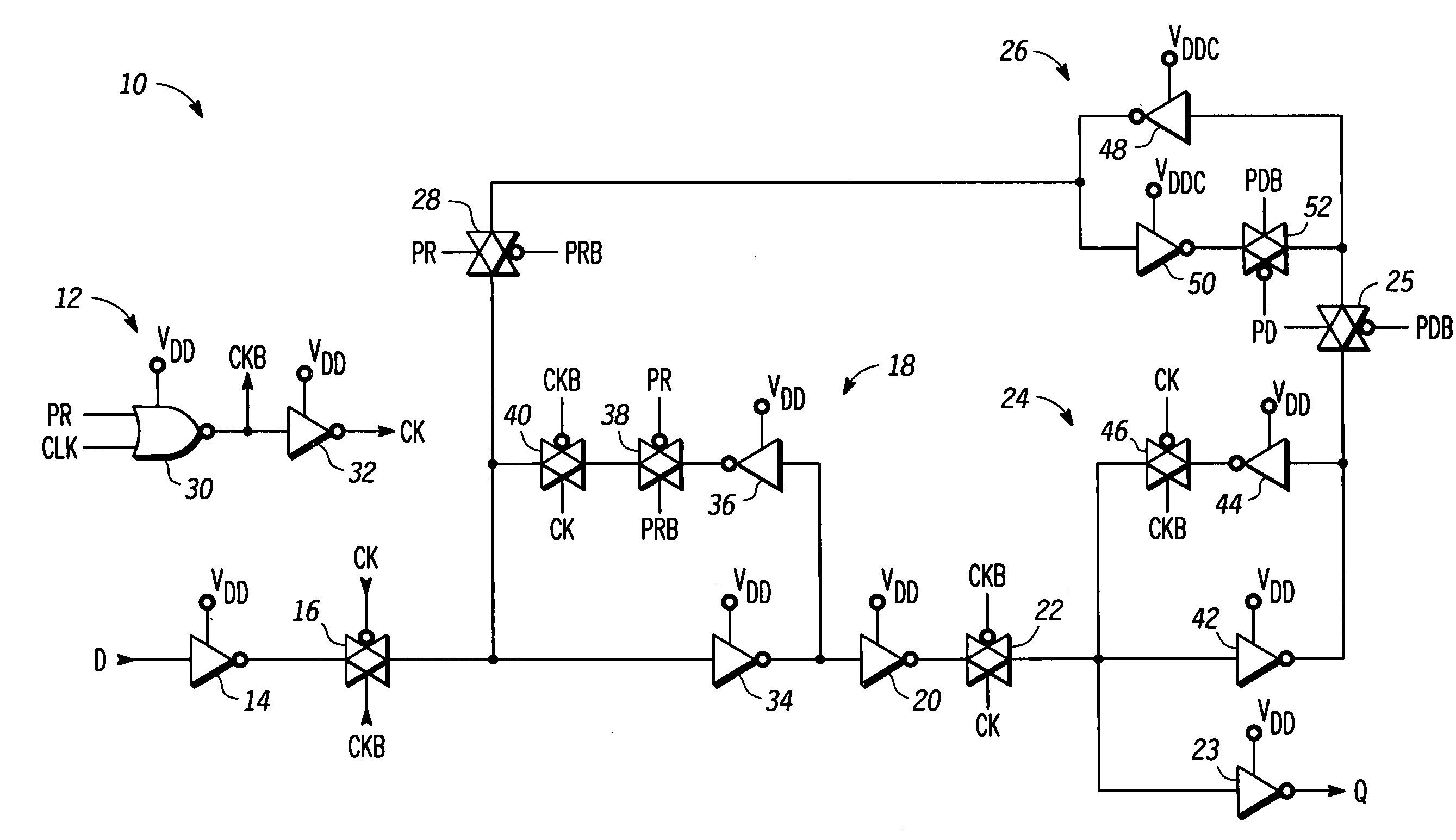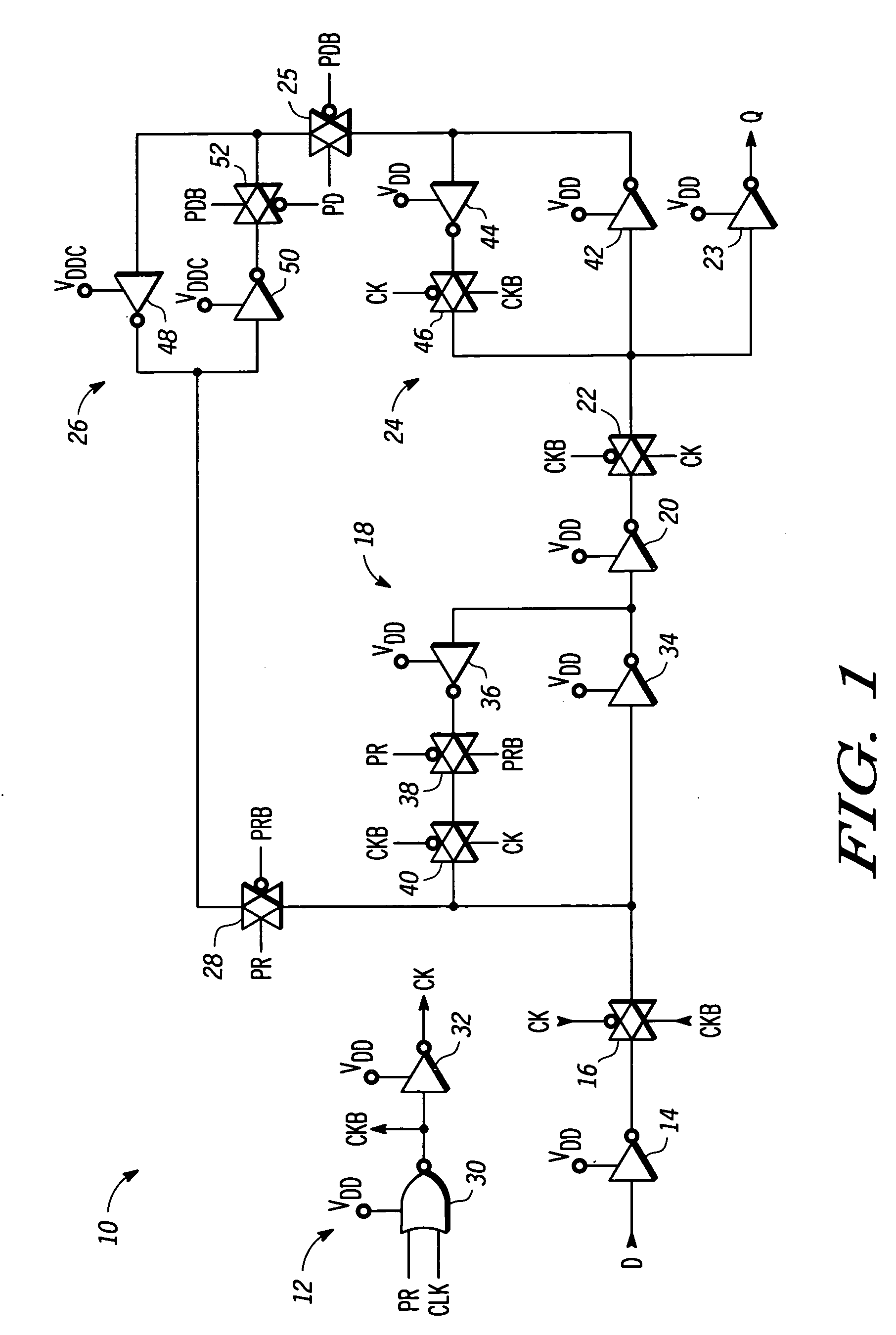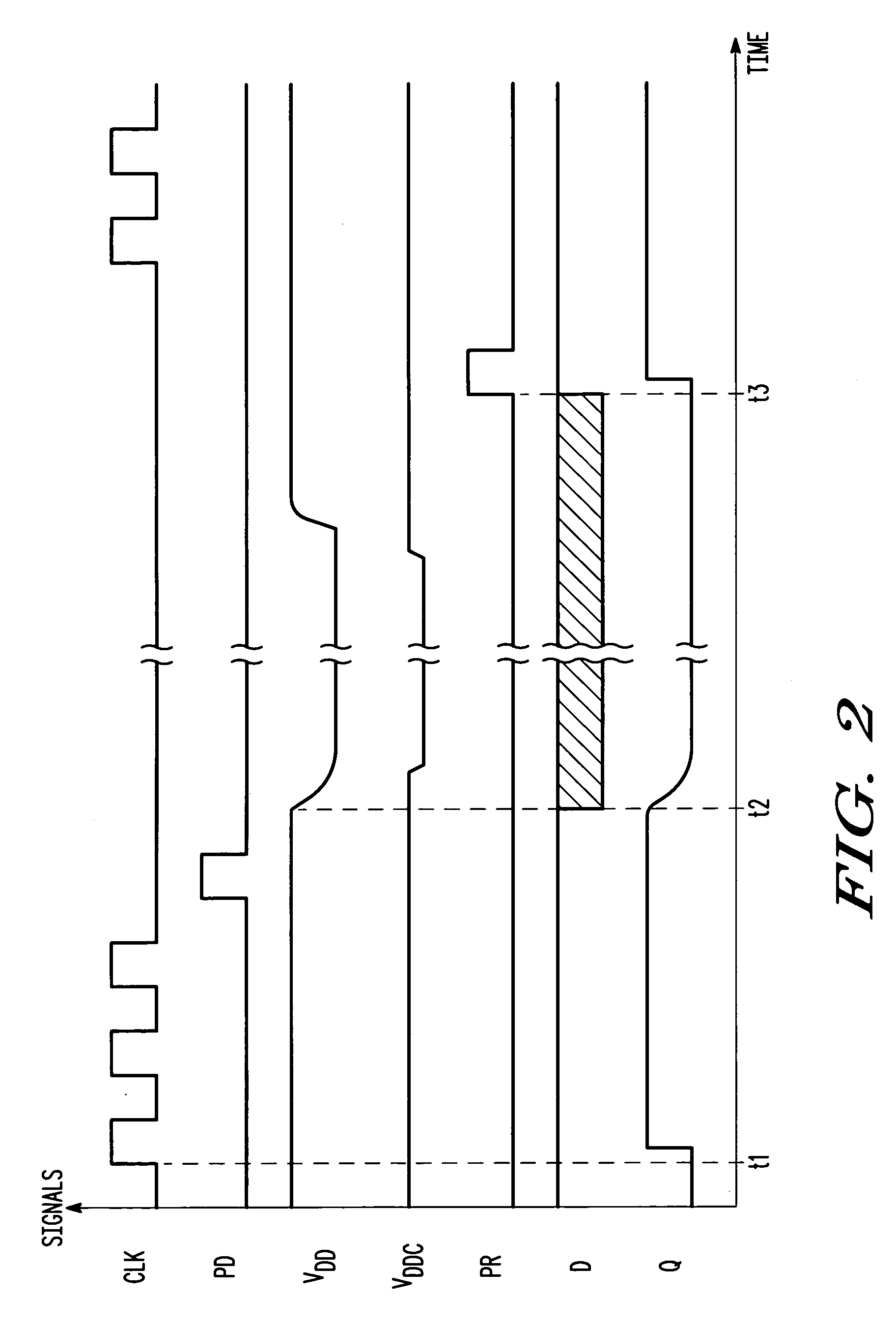Flip-flop circuit having low power data retention
a flip-flop circuit and low power data technology, applied in the field of integrated circuits, can solve the problems of slowing down the device's operating speed, consuming only leakage power, and becoming more difficult to meet chip leakage targets using traditional power reduction techniques
- Summary
- Abstract
- Description
- Claims
- Application Information
AI Technical Summary
Benefits of technology
Problems solved by technology
Method used
Image
Examples
Embodiment Construction
[0011]Generally, in one aspect, the present invention provides a flip-flop circuit that retains its state in a low leakage latch during a low power mode. The flip-flop includes a master latch, a slave latch, and the low-leakage latch. The master and slave latches are coupled to receive a power supply voltage that is removed during the low power mode. The low-leakage latch receives a power supply voltage that is maintained during the low power mode. The master latches latch an input signal during a normal operating mode but are non-functional in response to entering the low power mode.
[0012]The low-leakage latch has an output terminal coupled to the master latch via a transmission gate and an input terminal coupled to the slave latch. The low-leakage latch stores the logic state of a signal that was received from the slave latch during the normal operating mode, and maintains the latched logic state during the low power mode. Power is then removed from the master and slave latches du...
PUM
 Login to View More
Login to View More Abstract
Description
Claims
Application Information
 Login to View More
Login to View More - R&D
- Intellectual Property
- Life Sciences
- Materials
- Tech Scout
- Unparalleled Data Quality
- Higher Quality Content
- 60% Fewer Hallucinations
Browse by: Latest US Patents, China's latest patents, Technical Efficacy Thesaurus, Application Domain, Technology Topic, Popular Technical Reports.
© 2025 PatSnap. All rights reserved.Legal|Privacy policy|Modern Slavery Act Transparency Statement|Sitemap|About US| Contact US: help@patsnap.com



